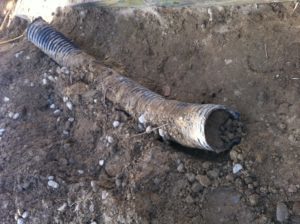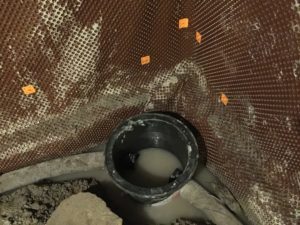22 Aug WATER LEAKS
Water damage caused by leaks can be very costly to any home. Apart from the financial expense due to the repairs, there are also the added effects of your family’s health and the inconvenience that may be experienced. Water leaks can come from many different sources, both from inside and outside your walls. Some of these will be discussed below.
 The most obvious place where water will accumulate in the basement and this is because the basement is the lowest part of the house. Water leaking into your basement can come from downspouts and eaves through, the foundation, window wells, and pipes, to name some.
The most obvious place where water will accumulate in the basement and this is because the basement is the lowest part of the house. Water leaking into your basement can come from downspouts and eaves through, the foundation, window wells, and pipes, to name some.
Clogged downspouts cause eaves through to back up and spill the rainwater from the roof down the sides of the house where it can either penetrate the siding/walls or it can drain directly into the foundation. If there are any cracks in the foundation, this can cause the water to leak directly into the basement.
As a precaution, check your eaves through annually to ensure that they are not clogged and ensure that the water expels from your downspout at least a few meters away from your home. The landscaping around your house should always be graded on a slope, away from your foundation.
Sometimes cracks appear in a foundation as the concrete hardens which usually is not an issue. The problem arises when there is water close by. To identify and solve these issues would require hiring a professional such as a waterproofing specialist.
Waterproofing can be done two ways; externally or internally. The external procedure is very costly and involves excavating the perimeter of your home, reinstalling/installing a weeping tile system, applying a sealant to the walls of the foundation and then attaching a dimpled membrane which would allow the water to run off to the weeping tile instead of getting trapped against the wall. The weeping tile is then covered with a layer of gravel and the excavated trench is then backfilled.
If your basement is continuously leaking at the bottom of your foundation, this could indicate that the existing weeping tiles are broken or blocked with debris. To install a new weeping tile system would also involve excavating the perimeter of your home down to the footing, remove the old tile and replacing with a new system.
 The internal procedure (also called internal de-watering) is much less costly. To de-water a basement from the interior, a perimeter drain must be installed. In cases where water is coming up through the floor, a drain pipe is added to collect water before it comes in contact with the underside of the slab. The water is transported away from the basement, preventing flooding via a sump-pump or gravity drain. A heavy-duty sump pump in a sealed sump pit is positioned in a home’s basement which will send water out to a more acceptable location, like a sloped lawn or a municipal storm drain.
The internal procedure (also called internal de-watering) is much less costly. To de-water a basement from the interior, a perimeter drain must be installed. In cases where water is coming up through the floor, a drain pipe is added to collect water before it comes in contact with the underside of the slab. The water is transported away from the basement, preventing flooding via a sump-pump or gravity drain. A heavy-duty sump pump in a sealed sump pit is positioned in a home’s basement which will send water out to a more acceptable location, like a sloped lawn or a municipal storm drain.
Window wells are small semi-circular corrugated steel or plastic “wall” structures positioned outside basement windows that allow more light to enter and keep soil and water away from the window. Window wells, when installed below grade on the exterior of a home, must also include a working drainage system. In the absence of drainage, window wells fill up and the water simply pours through the seals of the window and into the basement.
During springtime, always shovel out the snow to minimize the melt. As well as keep the area cleaned of dirt and debris which can block the drain over time and cause water leaks.





No Comments